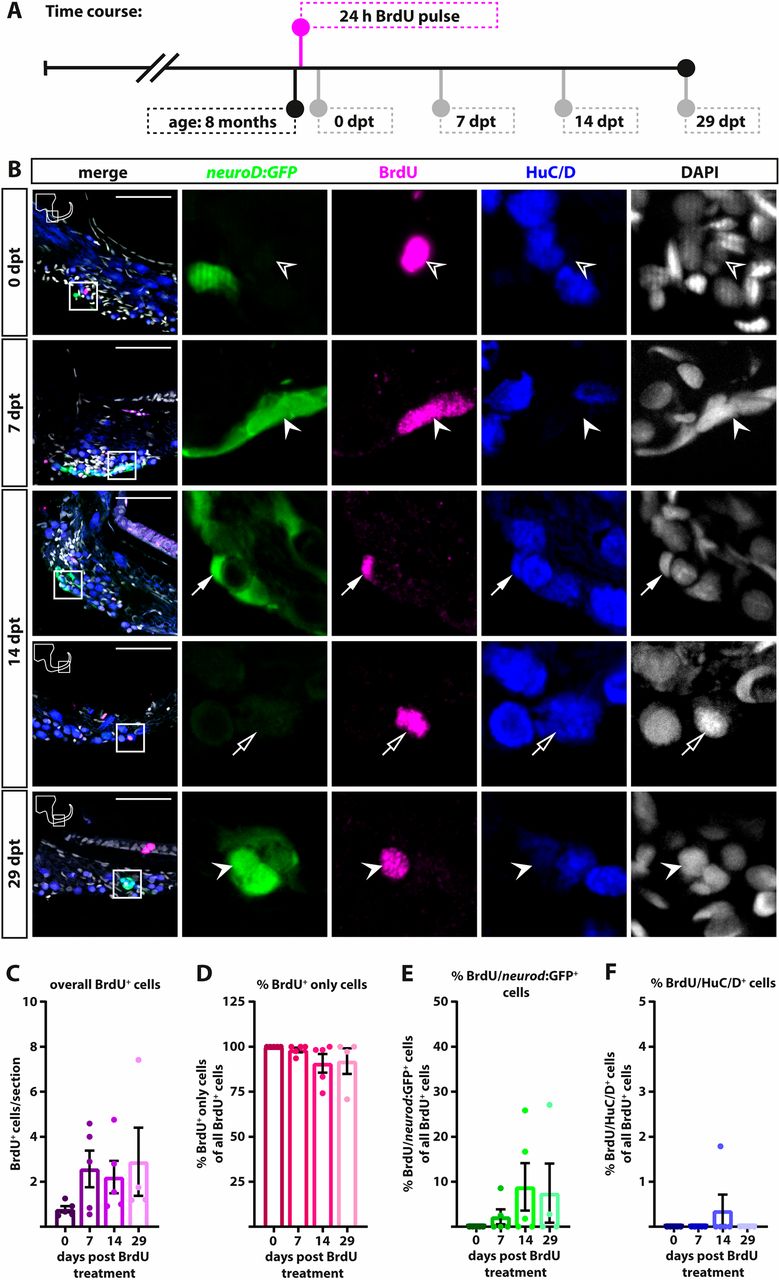Fig. 5 A proliferating but marker-negative cell population replenishes the neurod:GFP-positive cell pool at adult stages. (A) Time course for BrdU pulse chase experiment: 8-month-old Tg(neurod:GFP) zebrafish were sacrificed at 0, 7, 14 and 29 dpt. (B) Antibody staining reveals that BrdU-positive cells never co-localize with neurod:GFP at 0 dpt (open arrowheads). However, BrdU/neurod:GFP-positive cells are present at 7 dpt (solid arrowheads). Newly generated neurod:GFP-positive cells can either differentiate into new neurons [BrdU/neurod:GFP/HuC/D-positive cells (solid arrows) and BrdU/HuC/D-positive cells (open arrows)], as can be seen as early as 14 dpt, or remain in the pool of neurod:GFP-positive cells (solid arrowheads) as can be seen at 29 dpt. Panels on right show magnification of boxed areas in left panels. (C-F) Quantification of overall BrdU-positive cells (C) as well as percentage of BrdU-positive-only cells (D), BrdU/neurod:GFP-positive cells (E) and BrdU/HuC/D-positive cells as a fraction of all BrdU-positive cells (F). Scale bars: 50 µm. Cross-sections show dorsal to the top and lateral to the right. For quantifications: 0, 7, 14 days, n=5; 29 days, n=4 (n=fish; 1 SAG/fish; 12 sections/SAG); data are presented as mean±s.e.m. Ordinary one-way ANOVA with Tukey's multiple comparison test.
Image
Figure Caption
Acknowledgments
This image is the copyrighted work of the attributed author or publisher, and
ZFIN has permission only to display this image to its users.
Additional permissions should be obtained from the applicable author or publisher of the image.
Full text @ Development

